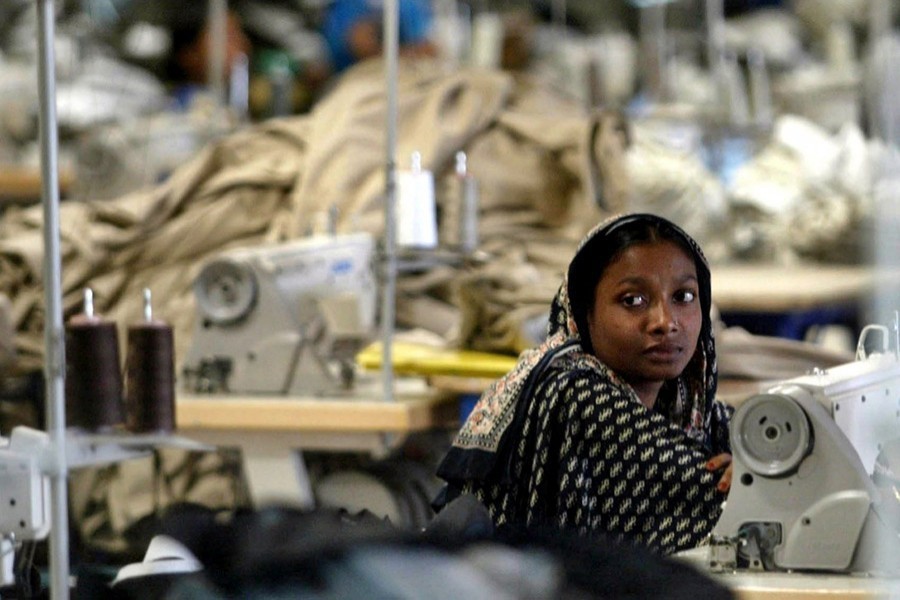
Published :
Updated :

A sense of urgency pervades the relevant government agencies to address labour unrest over the new wage structure for the garments sector. The prelude to the national election having witnessed a spate of demonstrations at 50 factories in Gazipur, Ashulia and Narayanganj since December 09, one intense phase of agitation may have tapered off, notionally speaking. But the unrest simmers as the inherent 'inconsistencies' in the new wage dispensation are likely to fuel further trouble in the sector going ahead. And, it couldn't have come at a worse time considering that this coincided with the peak season for export of some brand items in high demand in the western world.
Thus seized with the situation, State Minister for Labour Mujibul Haque in an emergency meeting on December 15 held out an assurance: "The government will address the inconsistencies, if any, in the new wage structure through discussion with all stakeholders after the election."
A hands-on interactive approach has already got underway with the most important element in the chemistry for solution, namely, the employers, expected to be drawn into the equation soon enough. The Department of Inspection for Factories and Establishments (DIFE) held a meeting last Sunday with a number of labour leaders. The latter highlighted 'the confusion over the gazette notification on new wage structure, reduction in basic payment, and disproportionate rise in wage for different grades.'
Now the labour leaders' opinions will be conveyed to the Ministry of Labour and Employment (MoLE) by the DIFE with their recommendations for deciding the next course of action following the election. So far so good, but without the garment factory owners' calculus sparing a pragmatic, production stimulating and incentivising space to the workers the task of realising the full potential of the RMG sector may be derailed.
While the basic pay for RMG workers constituted 67.69 per cent of the gross minimum wage in 2006, it is set at 51.25 per cent in the 2018 edition. The grumbling is because of the fact that payment of different allowances - overtime, festival bonus and other service-related benefits - depends on the basic salary. One more point of discord relates to disproportionate increases in basic pay between grades ranging from TK.272 in the seventh grade to TK.196, TK.164 , TK.79, Tk.42 and TK5.0. in the lower grades. According to an amended notification (dubbed as confusing) on November 29, four days after the original gazette notification on the new wage structure, the workers would not get any increment now as the new wage structure has come into effect. Although more than a year has elapsed since they received their last increment, they are denied it even on the old scale! Such nitty-gritty is important for the workers.
It is important to ensure that there is no confrontation between the workers and the managements which may prove unnecessarily attritional for the industry. So, all manner of rigid positioning should be avoided between the employees and the employers. Instead they ought to settle differences, if any, through discussion. In fact, an auto-reflexive mechanism needs to be put in place on the floor or office levels for trouble-shooting and preventing any conflict from arising .
The workers should not lend their ears to rumour-mongering, far less to any rumour itself. For that would be playing into the hands of trouble-makers who may be waiting in the wings to bring the sector to harm. And, a cooperative management is pivotal to a balanced two-way relationship. Working in concert is all the more imperative when the RMG industry leaders are aiming at $50 billion worth of apparel exports by 2021, the field being laid open by China.


 For all latest news, follow The Financial Express Google News channel.
For all latest news, follow The Financial Express Google News channel.